Step 1 – Select Cell Where Average Will Be Displayed
- Select a cell where you want to show the average daily sales from 01/09/22 to 10/09/22. We have selected cell F6.
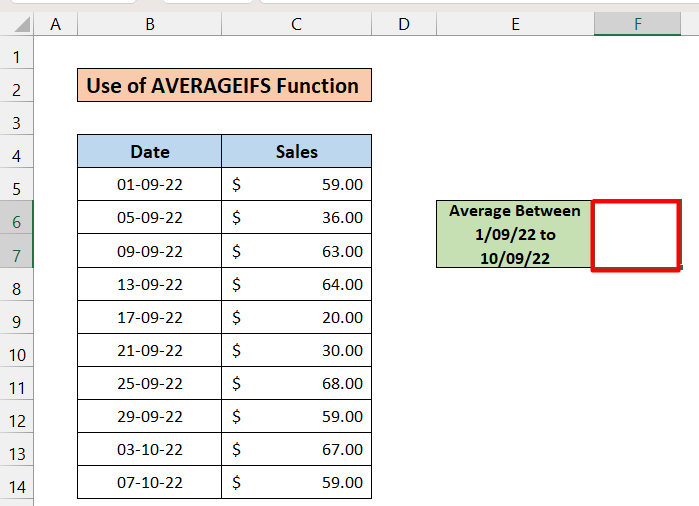
Step 2 – Input Formula in Cell
- Enter the following formula in cell F6.
=AVERAGEIFS(C5:C14,B5:B14,">=01/09/2022",B5:B14,"<=10/9/2022")- C5:C14 is the range from which the average will be calculated.
- B5:B14 is the range where 1st criteria will be tested.
- “>=01/09/2022” is the 1st criterion which implies dates that are greater than 1st September,2022 will be counted.
- B5:B14 is the range where 2nd criteria will be tested.
- “<=10/9/2022” is the 2nd criterion which implies dates that are less than 10th September,2022 will be counted.
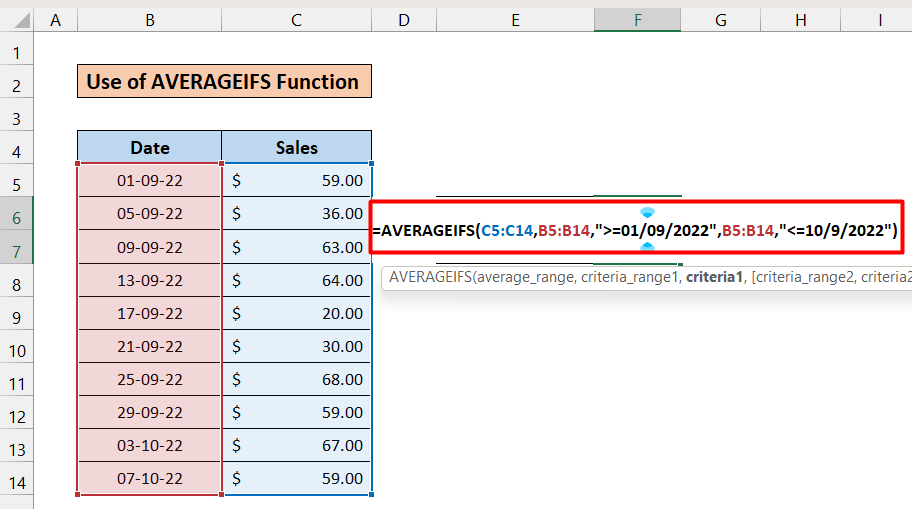
Step 3 – Press ENTER Key to Get the Average Value
- Press Enter to get the following result.
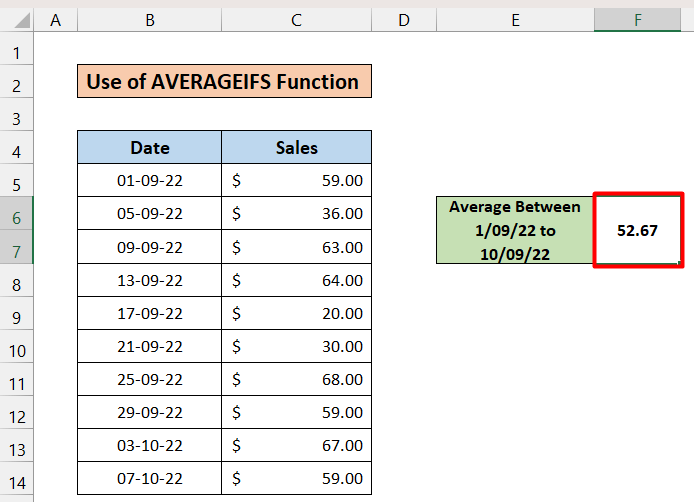
- To prevent misunderstanding of the date format, you can use the following formula with the DATE function instead of directly entering the dates.
=AVERAGEIFS(C5:C14, B5:B14, ">="&DATE(2022,9,1), B5:B14, "<="&DATE(2022,9,10))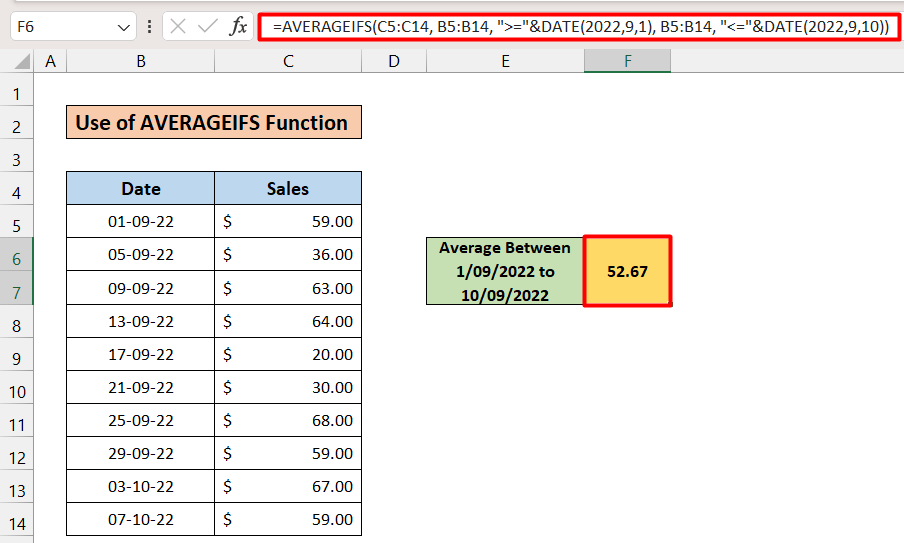
- Suppose the dates are the starting and ending days of the month (from 1/09/2022 to 30/09/2022), you can use the following formula, which includes the EOMONTH function, to calculate the average.
=AVERAGEIFS(C5:C14, B5:B14, ">="&DATE(2022,9,1), B5:B14, "<="&EOMONTH(B5,0))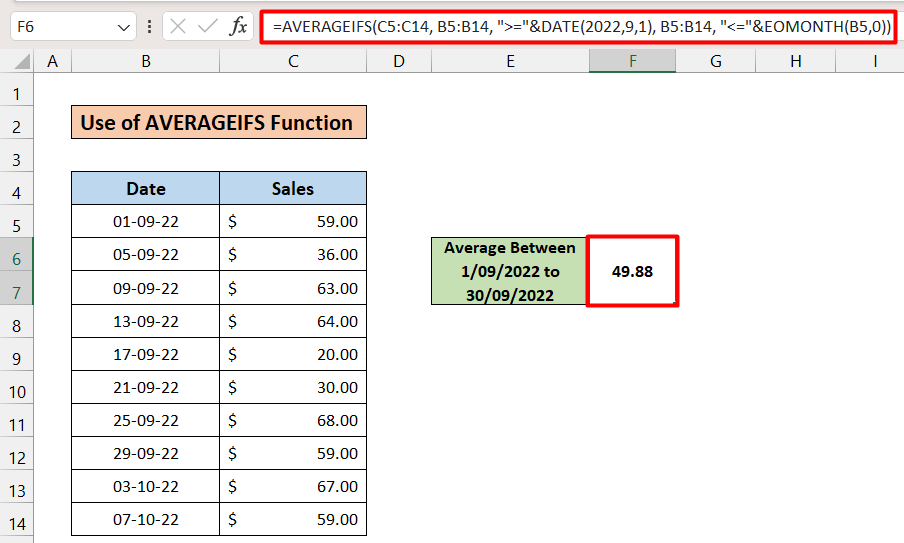
Things to Remember
- Remember to put the quotation marks (” “) in the right place while entering the formula.
- The sequence of 1st and 2nd criteria in the formula is not mandatory. You can enter in your own criteria.
Download Practice Workbook
Related Articles
<< Go Back to Excel AVERAGEIFS Function | Excel Functions | Learn Excel
Get FREE Advanced Excel Exercises with Solutions!

